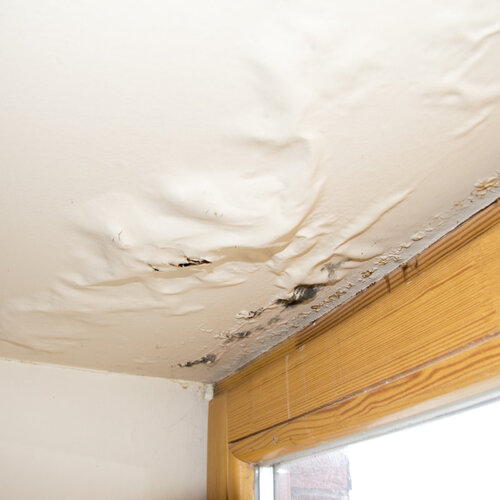Understanding the Main Factors for Water Leaks in Your Home
Understanding the Main Factors for Water Leaks in Your Home
Blog Article
Nearly everybody is bound to have their own individual thinking in relation to How to detect water leaks in your home.

Leaks not only trigger waste of water yet can also cause unnecessary damage to your house as well as advertise undesirable natural development. By recognizing and looking for everyday circumstances that trigger leaks, you can safeguard your house from future leaks and unnecessary damages.
Encroaching origins
The majority of water leakages start outside your house rather than inside it. If you see an unexpected decline in water pressure, claim in your tap, require time to go out as well as analyze your yard. You may see wet spots or sinkholes in your lawn, which could suggest that tree roots are getting into water lines creating water to leak out. You can have your plumber check for invasion, especially if you have trees or shrubs near your property.
Rusty water systems
This might be the cause of staining or bending on your water pipes. If our plumbing system is old, consider changing the pipelines considering that they are at a higher threat of corrosion than the newer designs.
Malfunctioning Pipeline Joints
The factor at which your pipes link is often the weakest link in the waterline. Pipe joints can deteriorate over time, leading to water leaks. The bulk of pipe joints are not conveniently noticeable. If you have loud pipes that make ticking or banging sounds, specifically when the warm water is turned on, your pipeline joints are possibly under a great deal of stress. It is recommended to have your plumber inspect your system yearly.
Instant temperature changes.
Extreme temperature level adjustments in our pipelines can trigger them to broaden as well as contract all of a sudden. This development and also tightening may create cracks in the pipelines, specifically if the temperature level are below freezing. If you maintained an eye on exactly how your plumbing works, it would be best. The presence of the formerly mentioned conditions often shows a high risk.
Poor Water Connectors
At times, a leak can be triggered by loose hoses and pipelines that provide your devices. Most of the time, shifting is what causes the loosened water Links. You might find when it comes to a cleaning device, a hose pipe may spring a leakage because of shaking throughout the spin cycle. In case of a water connections leakage, you may notice water running straight from the supply line or puddles around your devices.
Obstructed Drains
Blocked drains pipes may be irritating and also inconveniencing, but they can in some cases wind up creating an overflow leading to rupture pipes. Maintain getting rid of any kind of products that may go down your drains that could clog them to avoid such hassles.
All the above are root causes of leaks however not all water leakages result from plumbing leaks; some leaks might originate from roof leakages. All leakages must be repaired right away to avoid water damage.
Leakages not only trigger waste of water but can additionally create unnecessary damage to your residence as well as promote undesirable natural growth. By looking as well as understanding for day-to-day circumstances that cause leakages, you can safeguard your home from future leaks and unnecessary damage. Today, we will look at 6 leak triggers that may be causing your pipes to drip.
At times, a leak can be caused by loose tubes as well as pipelines that supply your home appliances. In instance of a water connections leak, you may observe water running straight from the supply line or puddles around your appliances.
How To Check For Water Leak In Your Home
How To Check for Leaks
The average household's leaks can account for nearly 10,000 gallons of water wasted every year and ten percent of homes have leaks that waste 90 gallons or more per day. Common types of leaks found in the home are worn toilet flappers, dripping faucets, and other leaking valves. These types of leaks are often easy to fix, requiring only a few tools and hardware that can pay for themselves in water savings. Fixing easily corrected household water leaks can save homeowners about 10 percent on their water bills.
To check for leaks in your home, you first need to determine whether you're wasting water and then identify the source of the leak. Here are some tips for finding leaks:
Take a look at your water usage during a colder month, such as January or February. If a family of four exceeds 12,000 gallons per month, there are serious leaks.
Check your water meter before and after a two-hour period when no water is being used. If the meter changes at all, you probably have a leak.
Identify toilet leaks by placing a drop of food coloring in the toilet tank. If any color shows up in the bowl after 10 minutes, you have a leak. (Be sure to flush immediately after the experiment to avoid staining the tank.)
Examine faucet gaskets and pipe fittings for any water on the outside of the pipe to check for surface leaks.
Undetected water leaks can happen without the home or business owner even realizing. If you suspect a water leak, but not able to find the source. It is time to contact a professional water leak detection service, The Leak Doctor.
How To Find a Water Leak In Your Home
https://www.leakdoctor.com/blog/How-To-Check-For-Water-Leak-In-Your-Home_AE197.html

We were made aware of that write-up on How to Find Water Leaks from a good friend on a different web address. Those who enjoyed reading our page please make sure you remember to share it. We recognize the value of reading our article about Common Water Leaks In House.
Get industry-leading emergency plumbing. Report this page